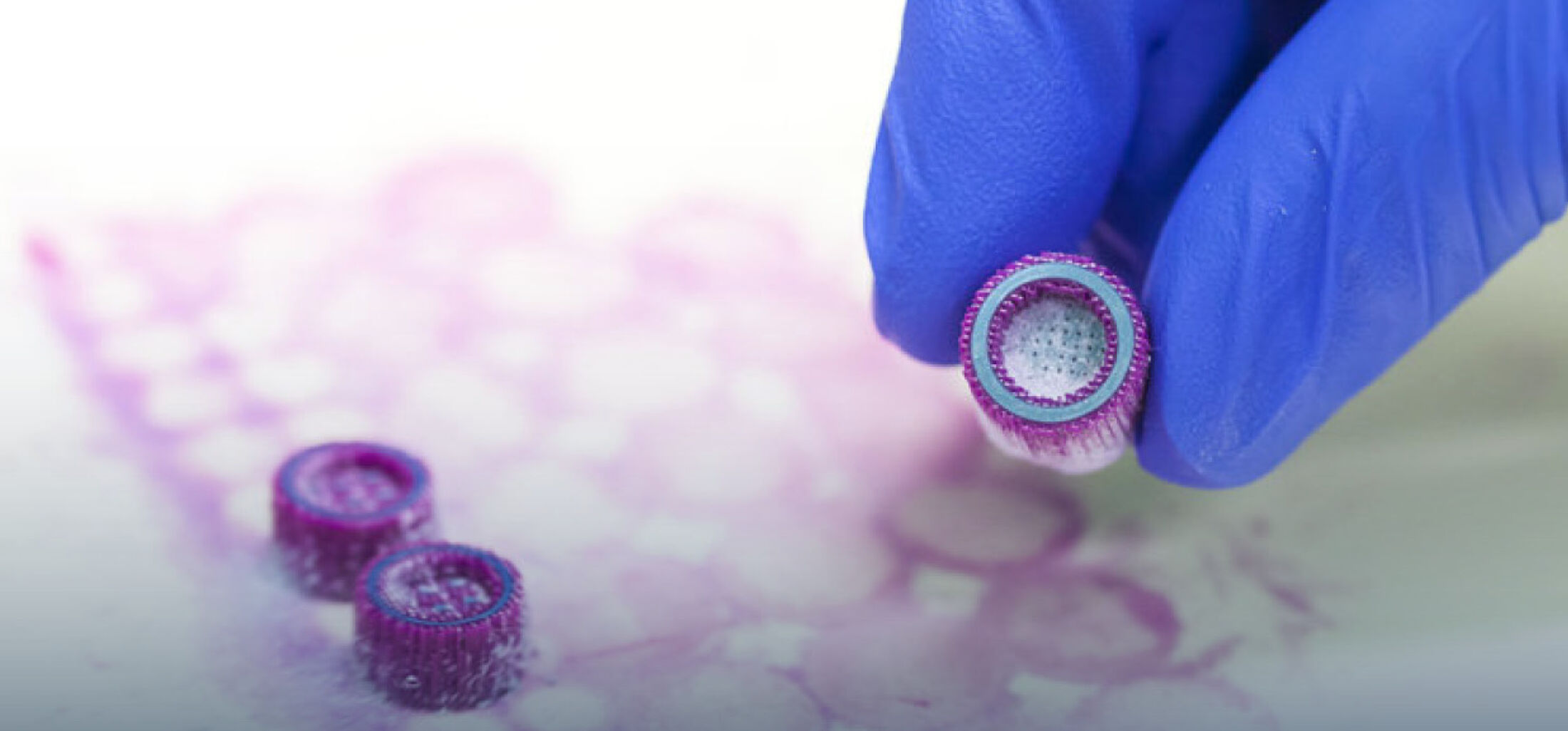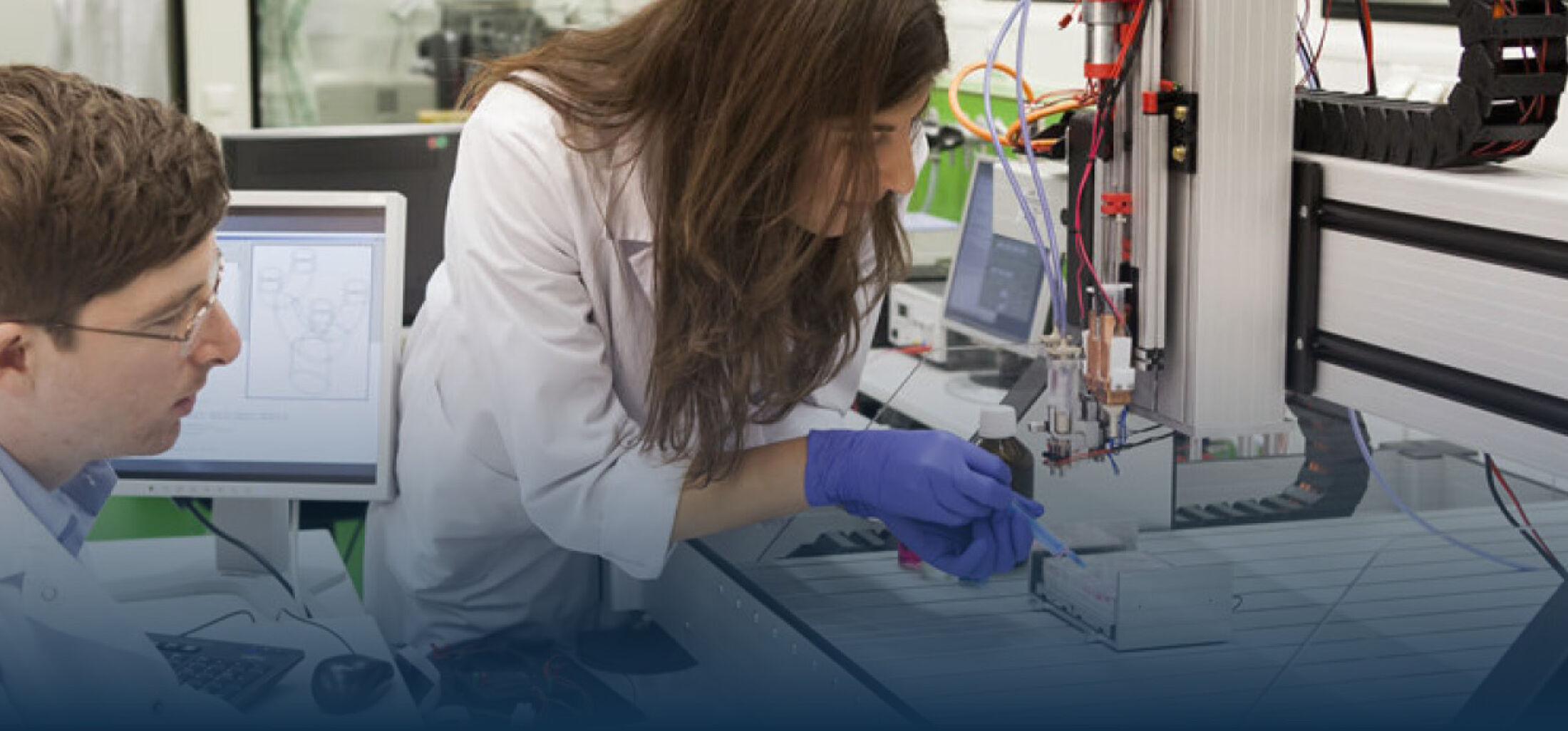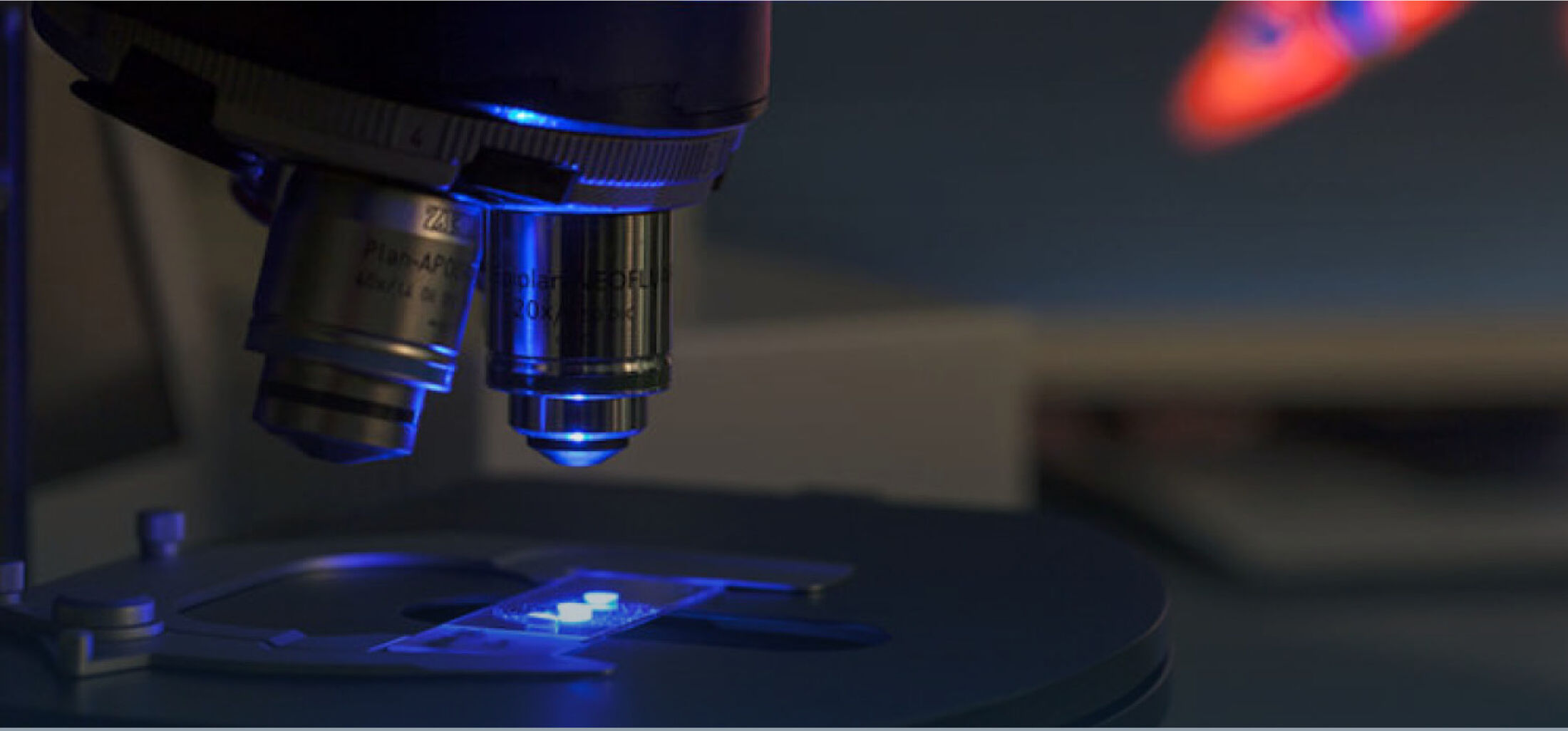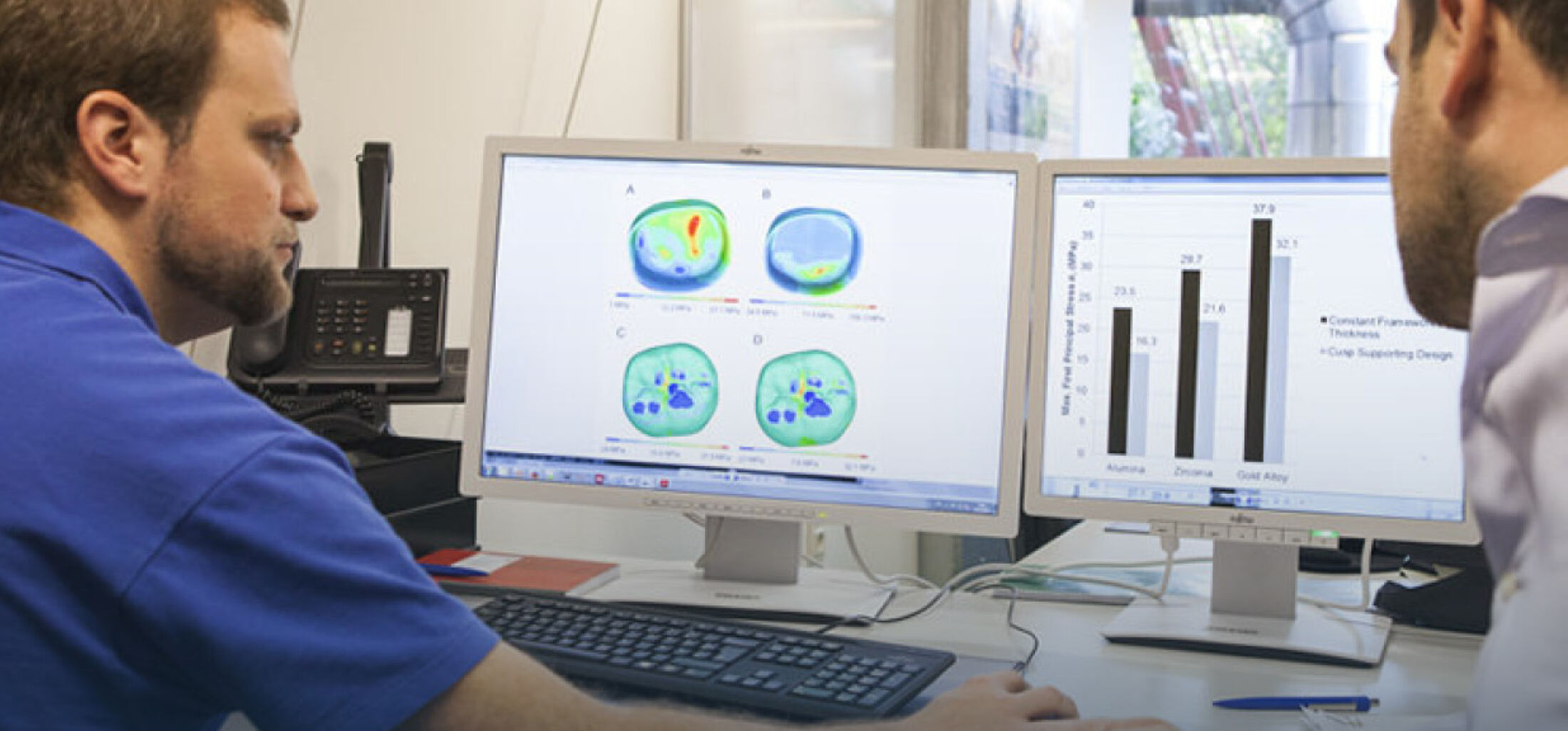RoboGel
Development of a robotic printing system for the generative manufacturing of three-dimensional polymers and cell construct
The aim of this project, which is funded by the German Federal Ministry of Economics and Technology (BMWi), is to develop a marketable, fully automated 3D-bioprinter for layer-by-layer additive printing of cell-laden hydrogel structures within a supporting liquid. This project runs in cooperation with an industrial partner. The technical performance of the machine should be comparable to already available 3D-printers. However, using the technology of so called submerged bioprinting the new system should enable manufacturing considerably bigger and especially higher structures than those that can be generated with commercially available printers at present.
Bioprinting is a tissue engineering discipline that adapts the concept of rapid prototyping to enable manufacturing three-dimensional living tissue. In order to generate a viable 3D-structure cell-laden hydrogels are dispensed layer-by-layer according to a virtual model. Due to the low mechanical stiffness of hydrogels, structures generated with conventional print technologies are limited in height. Currently, only micrometer to millimeter high structures can be built-up with sufficient accuracy. At the Department of Dental Materials and Biomaterials Research, RWTH Aachen University Hospital, a novel printing technology for the generation of larger hydrogel structures has been developed. Cell laden hydrogels are printed into an inert, high density, non-miscible fluid. The fluid supports the hydrogel structures mechanically allowing the manufacturing of multilayered structures measuring several centimeters in height (Fig. 1).




